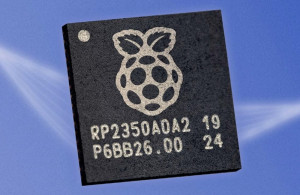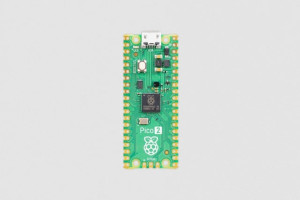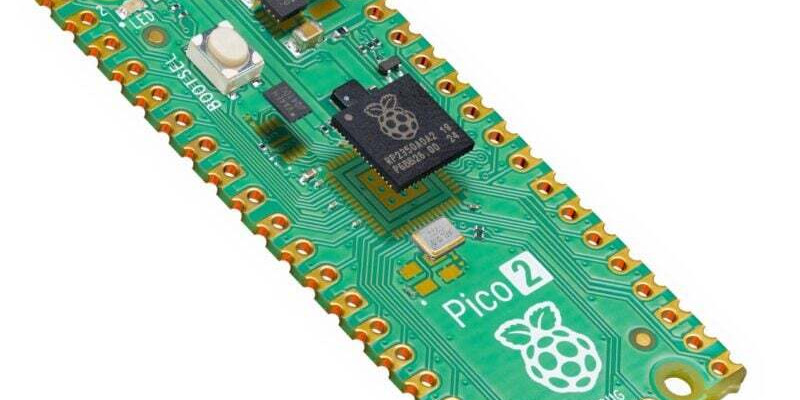The Raspberry Pi Foundation has just unveiled the Raspberry Pi Pico 2, a next-generation microcontroller board that builds upon the success of its predecessor, the original Pico. This new board is powered by the RP2350, a high-performance microcontroller designed in-house by Raspberry Pi. Priced at just $5, the Pico 2 is already available for purchase, offering enhanced features and improved performance while maintaining compatibility with the earlier Pico series.

A Leap in Performance
The RP2350 microcontroller at the heart of the Pico 2 brings a significant upgrade. It boasts two 150MHz Arm Cortex-M33 cores which provide floating-point and DSP support, and 520KB of on-chip SRAM distributed across ten banks for concurrent access.
The new microcontroller also introduces a comprehensive security architecture, featuring Arm TrustZone technology, signed boot support, SHA-256 acceleration, and a true random number generator (TRNG).
With its upgraded PIO state machines and the new HSTX peripheral for high-speed data transmission, the Pico 2 is poised to handle more complex and demanding projects.
Despite these advancements, Raspberry Pi has ensured that the Pico 2 remains hardware and software compatible with the original Pico. This means that existing projects and setups can seamlessly transition to the new board without requiring significant modifications.
The Pico 2 pairs the RP2350A variant with 4MB of external QSPI flash, double the capacity of the original Pico, allowing for more storage and greater flexibility in development.
Raspberry Pi has also introduced different packaging options for the RP2350, including a 7x7mm QFN60 package with 30 GPIOs and a larger 10x10mm QFN80 package with 48 GPIOs. These variants come with or without 2MB of stacked-in-package QSPI flash, catering to various needs and preferences.
Despite the enhanced capabilities and increased silicon die size, the RP2350 remains affordably priced, with the RP2350A starting at just $1.10 in single-unit quantities.

Software and Documentation
Alongside the hardware launch, Raspberry Pi has updated its software platforms to support the Pico 2 and RP2350. The new release includes updates to the Pico SDK, MicroPython, and CircuitPython images, as well as efforts to bring the Rust programming language to the platform. Raspberry Pi has also collaborated with Google to integrate the Pigweed SDK, making it easier for developers to use Google's middleware libraries in their Pico 2 projects.
The launch is further supported by a comprehensive datasheet and tutorials to help developers get started with C/C++ development using the updated Raspberry Pi Pico Visual Studio Code extension. Raspberry Pi's partnership with the Trusted Firmware project also aims to establish the RP2350 as the reference hardware for secure firmware development, ensuring that the platform remains robust against common security threats.
Speaking of security, the introduction of signed boot ensures that only authorized code can be executed, protecting against unauthorized access and potential vulnerabilities.
Raspberry Pi has partnered with security experts and organizations to audit and test the RP2350’s security features, including offering a $10,000 bounty for the first successful breach of the signed boot process. This proactive approach highlights Raspberry Pi's commitment to delivering not just powerful but also secure hardware.
Looking Ahead
The Raspberry Pi Pico 2 is now in full-rate production, with units being shipped to approved resellers worldwide. While initial stock may be limited, Raspberry Pi is working to ensure a steady supply in the coming weeks. Later this year, the company plans to release a wireless-enabled version, the Pico 2 W, which will feature the same wireless modem as the Pico W, further expanding the capabilities of this versatile microcontroller.
With its enhanced performance, robust security features, and commitment to affordability, the Raspberry Pi Pico 2 is set to become a new favorite among developers and hobbyists alike, continuing Raspberry Pi's tradition of innovation and accessibility in the world of microcontrollers.
